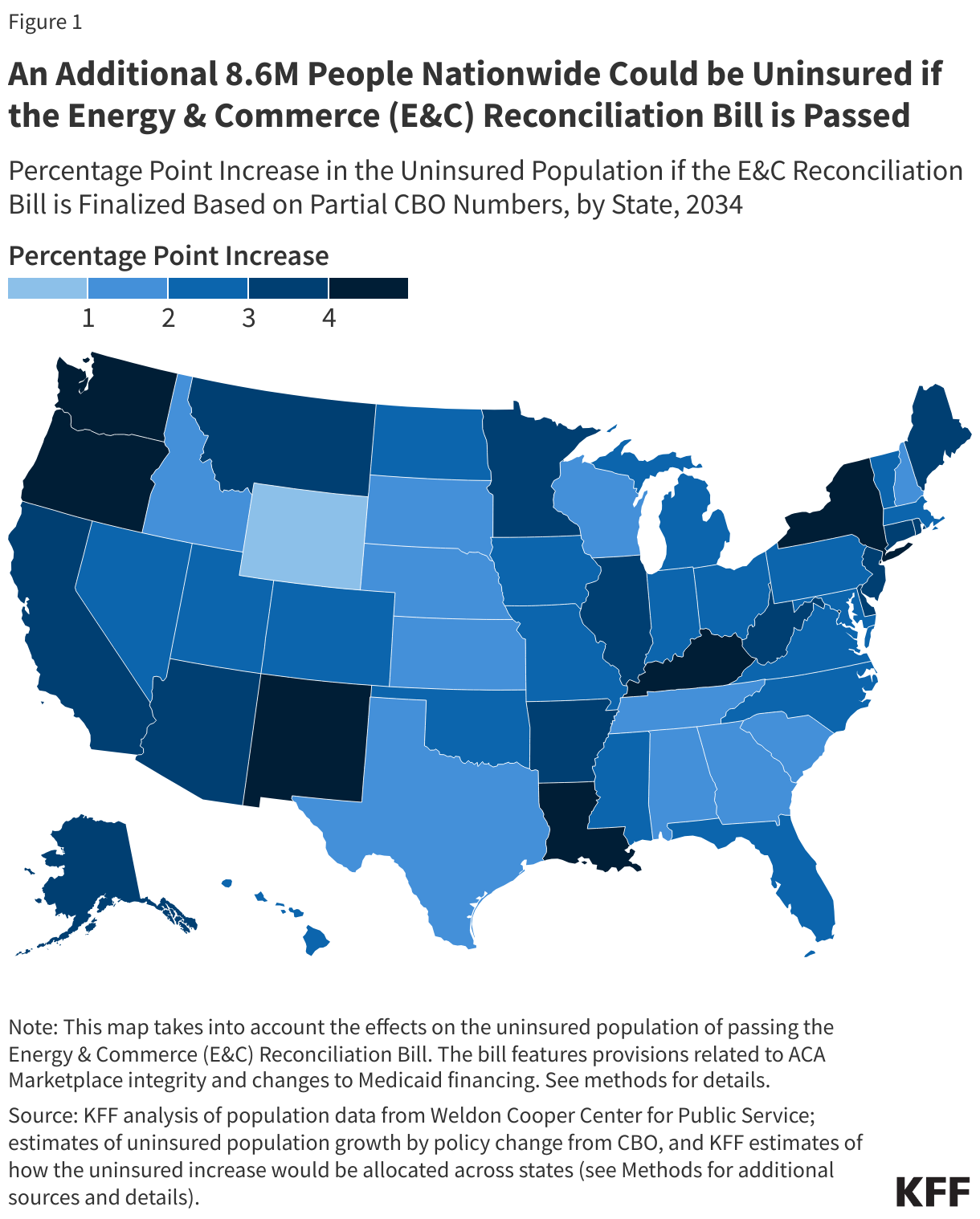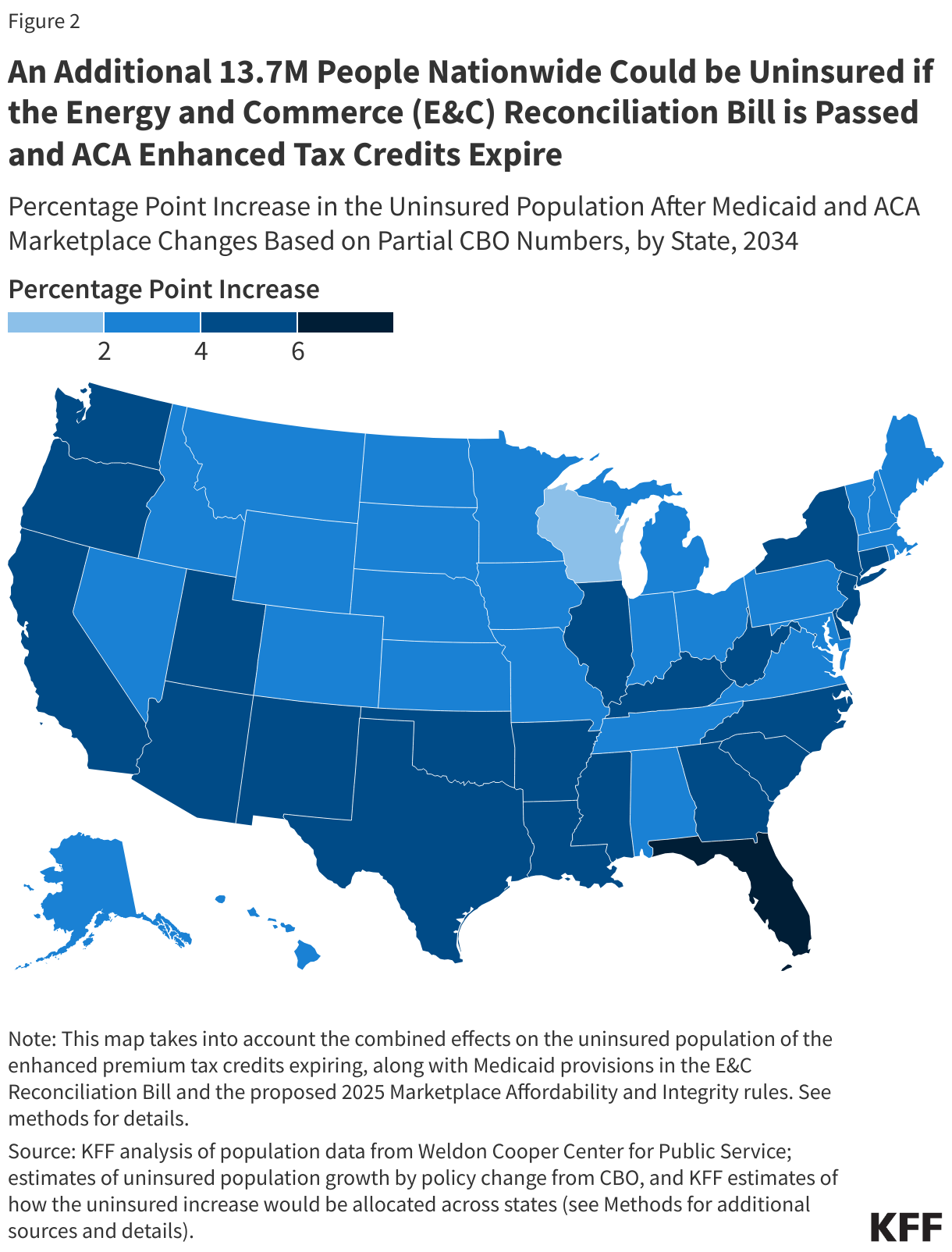This Map Shows Where People in the U.S. Could Lose Health Coverage from Medicaid and ACA Cuts
Updated on May 23, 2025
House Republicans have narrowly passed a tax and spending bill that could result in millions of Americans losing access to healthcare. The bill will now go to the Senate.
The bill sets out how Congress will spend money for the year and incorporates President Trump’s priorities to extend $4.5 trillion worth of tax breaks — and cut government spending to pay for it.
The House Energy and Commerce Committee, which oversees health care spending, for its part was tasked with cutting its budget by $880 billion. Most of those cuts would be made to Medicaid, though Affordable Care Act (ACA) coverage could also be affected.
The nonpartisan Congressional Budget Office has estimated that the Committee’s proposed changes to Medicaid and the ACA will result in 8.6 million Americans losing out on health care by 2034.
Medicaid is a lifeline for many people with breast cancer, and research has shown that it improves outcomes for people with a breast cancer diagnosis. Medicaid has been shown to improve early detection, timely treatment, and even survival rates. There’s even one Medicaid program that specifically helps cover the costs of breast cancer treatment.
A new map from the nonprofit health policy group KFF shows how — and where — the 8.6 million people will become uninsured if the Energy and Commerce Reconciliation Bill becomes law.
The map shows the percentage increase in each state’s uninsured population. Washington, DC, along with 10 states (Washington, Oregon, Kentucky, New York, Louisiana, New Mexico, Connecticut, Illinois, Rhode Island, and California) would see increases of 3 percentage points or more.
In terms of numbers, California and New York would have the highest number of uninsured people, followed by Florida, Illinois, and Texas.

The number of people losing coverage jumps to 13.7 million if the bill is passed and ACA-enhanced tax credits expire. People who purchase health insurance through ACA marketplaces receive tax credits that lower their monthly premiums. These tax credits were expanded in 2021 during the COVID-19 pandemic to help more people access affordable health care, but are set to expire in 2025 unless Congress acts to extend them.
This map shows the percentage increase in the uninsured population of each state if the Energy and Commerce Reconciliation bill passes and ACA-enhanced tax credits expire. Five states (Florida, Louisiana, Georgia, Mississippi, and Washington) would see increases of 5 percentage points or more. Florida, Texas, California, New York, and Georgia would have the highest total numbers of uninsured people.

To see the interactive map, visit KFF. To let your senators know how you feel about the bill, give them a call (you can find your representatives’ phone numbers at 5calls.org) or send them a message through the American Cancer Society Cancer Action Network’s online form.